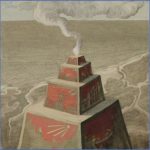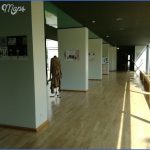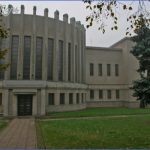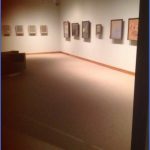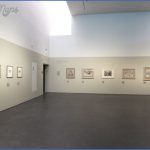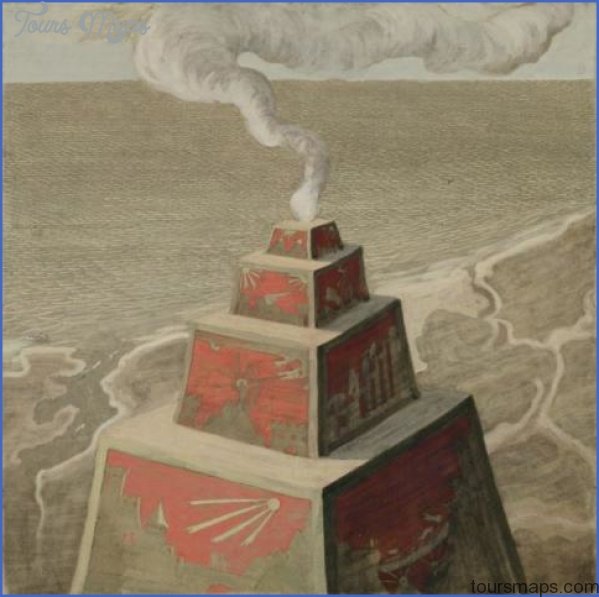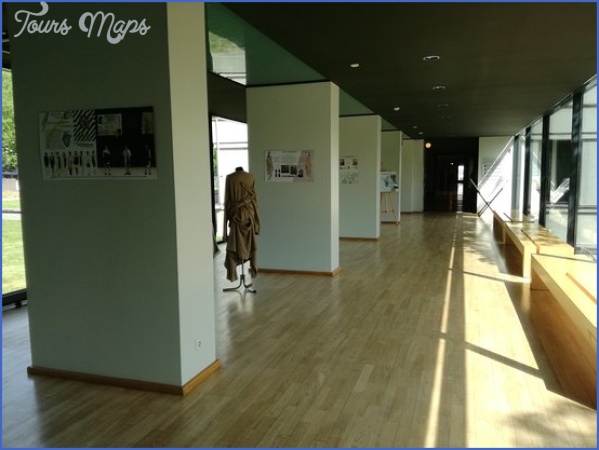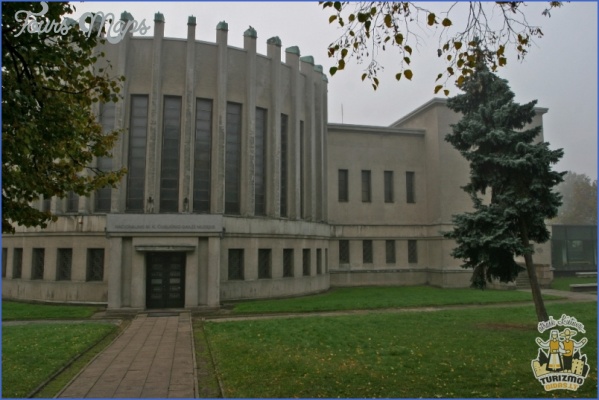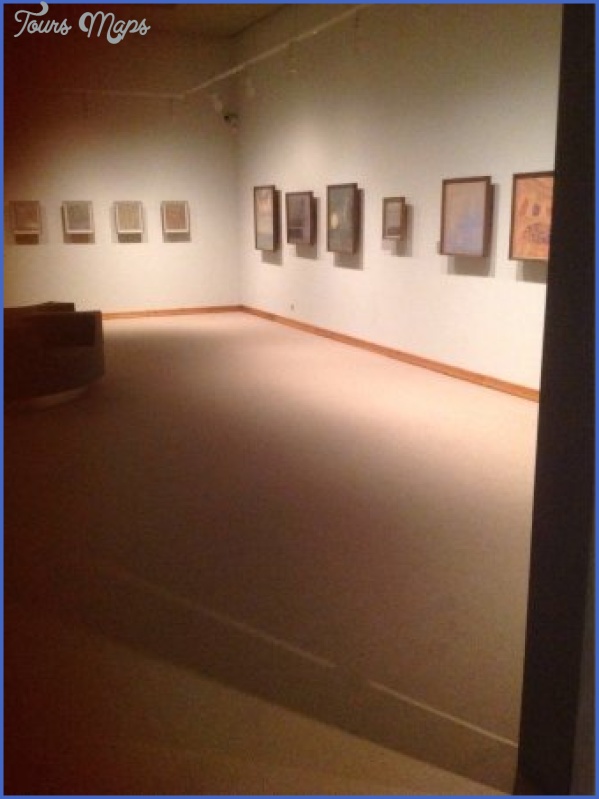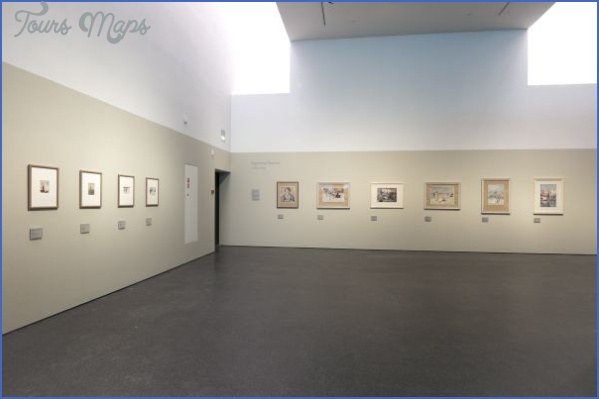ClURLIONIS MUSEUM
Mikolajus Konstantinas Ciurlionis is held in the same kind of regard by Lithuanians as Sibelius is by Finns, and he is similarly commemorated in his country. Ciurlionis was the first serious Lithuanian composer and is regarded, like Sibelius, as having laid the foundation for a national musical style. Today his piano pieces, folksong arrangements and symphonic poems are performed in Lithuania, but the nearly 300 works he composed between 1896 and 1911 also include organ preludes and fugues, movements for string quartet, a choral De profundis, a Polonaise for wind and a fragment of a symphony, all largely unknown.
What is unique about Ciurlionis is that he has equal standing as artist and composer. Yes, Glinka, Mendelssohn, Satie and Schoenberg drew and painted, as a pastime; but for Ciurlionis art competed seriously with music for his creative energies. And although music was his first vocation and painting his second, Ciurlionis – whose life was cut tragically short at the age of 35 – is today more widely known as an artist than as a composer. In 1921 the M.K. Ciurlionis National Art Museum was established in Kaunas; the present gallery was built in 1936. It holds the largest collection of his works, maintaining a permanent exhibition of his drawings and paintings and holding occasional concerts in its recital room, and it is the centre for research on both his art and his music. Soft music provides a background as you move through the gallery.
Ciurlionis was born in 1875 in Varena, 100 km east of Vilnius, on the Merkys River, but the family left when he was three years old. Varena was destroyed during World War II. From 1877 the family lived at Druskininkai, an attractive spa town (druska means ‘salt’) in a forest along the Nemunas River, near the Polish border, 124 km south of Kaunas and 150 km from Vilnius. On the centenary of Ciurlionis’s birth, the 50-km route between Varena and Druskininkai was dubbed the ‘Ciurlionis Way and lined with 20 traditional wooden sculptures by local craftsmen.
ClURLIONIS MUSEUM Photo Gallery
The family spoke Russian as well as Polish (their preferred tongue), but not Lithuanian, regarded as a peasant language by the father, Konstantinas, who was organist of the local parish church. Ciurlionis was the eldest of ten children, all of whom learnt music: they followed a rigorous domestic schedule of piano practice – one child after another every two hours – with choral singing at the end of the day.
The growing family lived in a compound with two small, single-storey, timbered houses at Druskininkai, along the main road, not far from the parish church. One building served as the family gathering place, where they ate, played and sang and where the parents and youngest children slept; the other served as a dormitory for the elder children. Since 1963 these houses have been furnished in period style as part of what is now a larger complex of wooden buildings, open to the public, incorporating a newly built chamber music hall seating 35, with photographic collages of the composer’s life and a memorial garden; a barn devoted to an exhibition of reproductions of his paintings and drawings, and displays of his music, with a gallery at the rear where exhibitions by living artists are held. As in Ciurlionis’s own time, a grand piano is the central feature of the main room of the grey house, which was destroyed in World War II and rebuilt on a slightly smaller scale. There is also the family harmonium and a second, upright piano given to them by his patron, Prince Oginski. Today the grand piano is next to the rear-facing window so that in the summer, with the window open, recitals can be given with the audience on benches in the garden. In the nearby yellow house, the smaller of the two rooms belonged to Ciurlionis; it is decorated with an easel, sketches and music and pictures of his mother and wife. The larger room recalls the family’s religious life and displays another piano, from Poland, where Ciurlionis spent his last months. Wherever he was living -Warsaw, Leipzig, St Petersburg or Vilnius – he returned each summer to the family home at Druskininkai.
Beyond the picket fence surrounding the houses is the red exhibition hall. Although most of its space is devoted to displays of Ciurlionis’s original drawings (among them musical graphics), reproductions of his paintings and editions and recordings of his music, this is intended as a Ciurlionis family museum. So there are also cases devoted to family portraits, including those of his wife, Sofija Kymantaite (1886-1958), and his
The Ciurlionis family home, Druskininkai
Rights were not granted to include these illustrations in electronic media. Please refer to print publication only child, Danute (1910-95); to the work ofhis sister Valerija (1896-1982), the first art historian to survey her brother’s output; and to that of another sister, Jadvyga (1899-1992), a distinguished musicologist. In the background is the recorded sound of one of his tone poems, In the Forest (1900) or The Sea (1907). The main street of Druskininkai bears (Ciurlionis’s name, as does the local music school, and in the woodland park near the parish church there is a striking centenary memorial to him. (Ciurlionis first left home at the age of 14 to study at an orchestral school on Prince Oginski’s estate at Plunge in western Lithuania. The prince made it possible for (Ciurlionis to study the piano and composition at the Warsaw and then the Leipzig conservatory. He had hardly completed his musical training in Leipzig when, after a summer of reflection at Druskininkai in 1902, he returned to Warsaw to study art. Among his subsequent, often mystical drawings – some of which he called ‘compositions’ – and paintings are several cycles with musical titles: ‘Fantasies’ (ten), ‘Funeral Symphony’ (seven), ‘Hymn’ (three), Prelude and Fugue (a diptych), and ‘Sonata’ (seven sonatas, each consisting of three or four paintings, with ‘movement’ titles such as ‘Allegro’ or ‘Andante’). His creative gifts were henceforth divided between the two arts, and through them he was drawn into the Lithuanian national movement: he gave piano recitals and conducted choirs, published folksongs, exhibited his work in Warsaw and St Petersburg and wrote articles on Lithuanian art and culture. In the autumn of 1907 he moved to Vilnius, where he took a room at the rear of the house at Saviciaus gatve 11, in the oldest part of the city. Today it is known as the M.K. Ciurlionis House and is open to the public for small exhibitions, recitals and other gatherings. The entrance is through an archway alongside the house. A portrait and a floral arrangement decorate the room in which he lodged; reproductions of his paintings line the walls of the middle room; and a grand piano (in playing condition) that once belonged to a friend of his dominates the front room, which seats 60.
In Vilnius he met Sofija, who was also involved in the Lithuanian national movement; the following summer he introduced her to his family, who asked her to teach them to speak Lithuanian. The couple were married at the beginning of 1909. In 1910 they collaborated on a book, In Lithuania, and by the end of the year, when Sofija was expecting their child, Ciurlionis, in St Petersburg, suffered severe depression. He spent his last months at the Czerwony Dwor Sanatorium in Pustelnik, near Warsaw, where he died on 10 April 1911. A plaque marks the building, now known as the ‘Red Estate’. He was buried in Lithuania, in the Rasos Cemetery on the outskirts of Vilnius.
Maybe You Like Them Too
- Top 10 Islands You Can Buy
- Top 10 Underrated Asian Cities 2023
- Top 10 Reasons Upsizing Will Be a Huge Travel Trend
- Top 10 Scuba Diving Destinations
- World’s 10 Best Places To Visit

